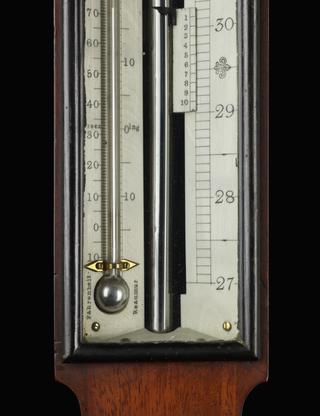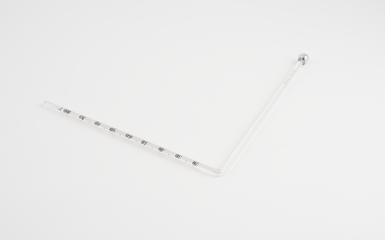









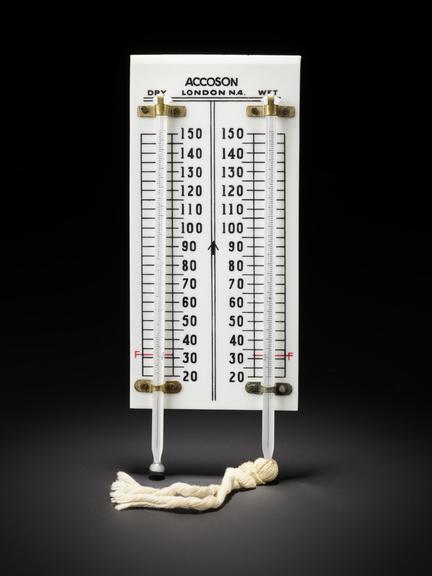
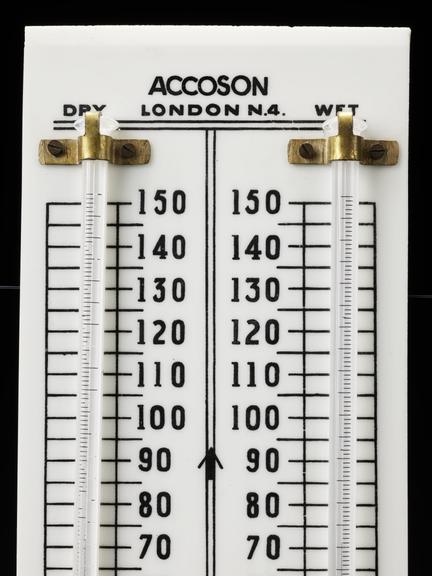






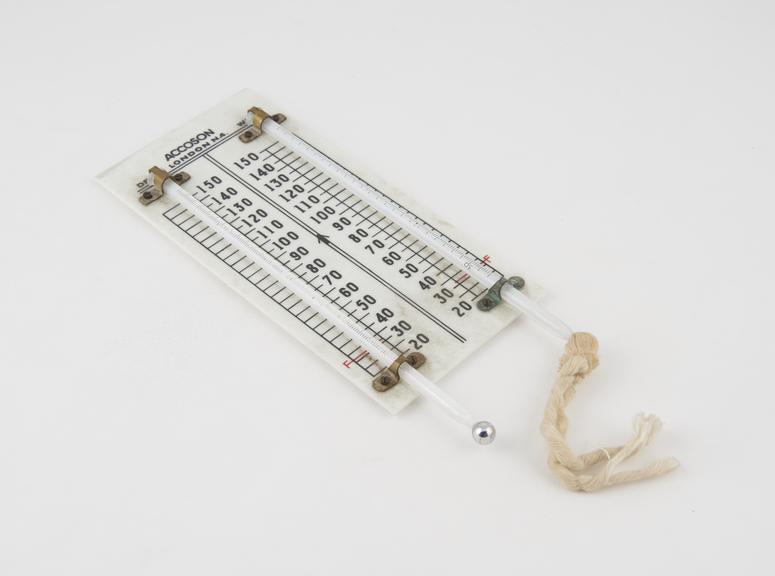
Wet and dry bulb psychrometer (a type of hygrometer for measurement of atmospheric humidity) by Accoson, London N4, 1960s. The two thermometers are set on white glass plate and both marked with scales from 20 to 150 degrees Fahrenheit.
Psychrometers are types of hygrometers for measuring humidity in the air. This type consists of two thermometers, one ‘dry bulb’ and one ‘wet bulb’, the latter of which has its mercury-containing bulb kept moist with a tubular cotton wick that has its end immersed in a reservoir of water. As water evaporates from the wet bulb, the thermometer registers a drop in temperature. By comparing readings from the wet and dry bulb thermometers with hygrometric tables published by the Meteorological Office, the observer could work out various measures of humidity: the dew point (the temperature to which air must be cooled to become saturated with water vapour); relative humidity (the percentage humidity in relation to maximum humidity at the same temperature); and vapour pressure (the pressure exerted by water vapour at a given temperature).
This instrument was used for regular observations by a meteorological enthusiast in the late twentieth century. Observations made by amateur meteorologists have long been an important source of data in meteorology.
Details
- Category:
- Meteorology
- Object Number:
- 2003-40
- Materials:
- glass, textile and metal (unknown)
- Measurements:
-
overall: 220 mm x 87 mm x 10 mm, .16 kg
- type:
- hygrometer
- credit:
- Hawkey, David

